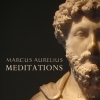
The modern world is constantly demanding more and more from us. It’s always more favorable to free up large amounts of time for self-care activities, but sometimes life dictates otherwise. This article is written for those busy times, it highlights evidence based and quick meditations we can engage in that can drastically alter our moods and perceptions
Number One: Five Things
This exercise asks you to use your five senses to help you become more aware of your surroundings. Using the five things exercise can help reduce panic, worry, and overthinking and allow you to become more present in the moment.
How to do this exercise:
When you notice yourself having unpleasant thoughts and emotions, pause for a moment and:
1) Name five things that you can see. Notice the detail, texture, and colour of the items. Try to point out things that are not so obvious.
2) Listen to the sounds around you, and name four things that you can hear. Try to notice different sounds that may have been present in your environment but you have not noticed, for example the sound of the air-condition humming.
3) Now focus on the things are in contact with you and name three things that you can touch or feel. This could be as simple as noticing how your body feels sitting in the chair.
4) Now turn your attention to the smells in your environment, and name two things that you can smell. You may begin to notice the smell of your perfume or simply smell the fresh air.
5) Lastly, focus on things that you can taste. This may be as simple as tasting the tooth brush that you used this morning or the food or drink that you just had.
Attempt to describe what you notice with a lot of detail as this will lead you to focus your attention on the mindfulness exercise, rather than on the anxiety that you may be experiencing as a result of a difficult situation.
Number two: Sushi Train
This exercise asks you to observe your thoughts to help you become more aware of your thought patterns and self talk. Using the sushi train exercise can help with regulating emotions, reducing unhelpful thinking styles, and improve coping with difficult situations.
How to do this exercise:
- Set aside some time to observe your thoughts.
- Imagine that you are sitting by a sushi train.
- When a negative or unpleasant thought comes up that you don’t want to buy into, put it on the sushi train and watch it go by.
- You might try this activity regularly. Try to place all of your worries and regrets on the sushi train.
- Orient yourself back to the present once you feel more grounded. Repeat this exercise regularly throughout the day.

Number Three: Bubbles
Another helpful mindfulness exercise is called ‘Bubbles’ and I find that this is another great mindfulness exercise to start with. It is also a helpful mindfulness exercise to try with your children. This exercise asks you to observe and describe your thoughts, which help with becoming aware of your thinking styles. You then engage in categorising them to gain some distance. You become the observer of your thoughts, rather than the ‘thinker’. This will aid with tolerating distress, regulating emotions, and increasing objectivity.
How to do this exercise:
- Sit comfortably in a chair or lay down.
- Close your eyes and press your feet firmly on the ground.
- Your task is to simply observe any thoughts, feelings, sensations or urges that you may experience in your body.
- Imagine that you are standing in the middle of a large open field blowing bubbles. Spend time looking around you in the open field, taking in what you are seeing. Take your time observing your surroundings.
- After about 20 seconds, begin describing what you see around you. Describe something, and then place that description within a bubble and watch the bubble float away. Describe other things you see, put those descriptions in bubbles and watch them float away. Do this for about 30 seconds.
- Next bring your attention to your thoughts, emotions, and bodily sensations. Begin observing what is happening for you. Each time you notice a thought, emotion, or bodily sensation, describe it as either a thought, a feeling, an urge, or a physical sensation.
- After you have described each experience, place that description in a bubble and watch that bubble float away into the sky. Attempt to do this for at least two minutes.
- Once you have completed this exercise, open your eyes and orient yourself back to your surroundings.
Number Four: Leaves on a stream
You can practice this mindfulness exercise when you are overwhelmed with your thoughts and need to get some distance from them in order to focus on the present moment or problem solve the situation. Practicing this skill over time can help you feel more grounded and build your confidence to combat worry and rumination.
How to do this exercise:
- Imagine that you are standing on a bridge above a stream. Floating on the stream are leaves from the surrounding trees. This may be a stream that you have actually been to before, or one that you one that you just imagine.
- Take a few moments to observe what is going on around you and what is happening within you. After about 20 seconds, begin to label what you observe within your mind and your body without letting judgments get in your way.
- For each observation that you make, label it as a thought, feeling, urge or physical sensation, put it on one of the leaves and let it float off down the stream. So you may have an unpleasant emotion about something, label it as a feeling, put it on a leaf and watch it float away downstream.
- The important thing to remember is to stand back and watch the leaves drift off. Attempt to do this exercise for at least two minutes.
- Once you are feeling more grounded, orient yourself back to the present moment.

Number Five: Dropping an anchor
You can think of this exercise as similar to a boat dropping an anchor during rough weather. Although dropping the anchor won’t necessarily make the rough weather pass, the boat remains safe until the weather passes. Practicing this skill over time can help you feel more grounded and enhance your confidence to deal with challenging situations.
How to do this exercise:
1. Pause for a moment and focus on your surroundings
2. Take slow deep breaths from your nose, notice how your chest rises and falls with each out-breath from your mouth
3. Firmly plant your feet into the ground. While planting your feet into the ground, feel your muscles in your legs tense up
4. Stand or sit up straight. Contract the muscles in your back and aim for a strong and steady posture. Attempt to hold this position comfortably.
5. Look around you and describe three things that you can see in your environment. Focus on the little details of the things that you can see. Do this for at least 30 seconds.
6. Describe three things that you can hear. Focus on the sounds for at least 30 seconds.
7. Repeat the exercise until you feel more calm or grounded.
8. Try to maintain the strong and upright posture as you leave this exercise behind.
IMPORTANT
It is important to note that your mind may wander away from these exercises as you are doing them. Just become aware that this is happening and gently bring it back to the exercise at hand. Try not judge your mind for wandering but rather accept that it has happened and return to the mindfulness exercise.










